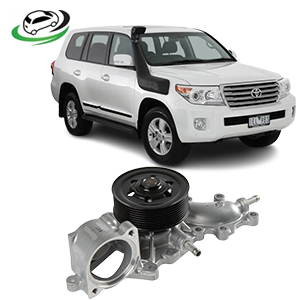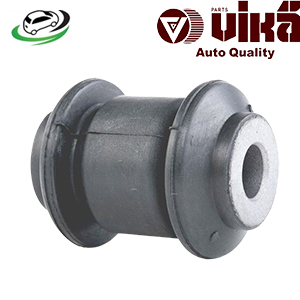-10%
Get AUDI 8U Q3/ A3 8P/ EOS/ Golf R/ Golf VI/ Jetta V/VI/ Passat B7/ R32 MKV/ Tiguan 1/2 Left Ball Joint 059103604F
The ball joint is a crucial component in a vehicle’s suspension system, allowing for smooth movement of the steering and wheel assembly while providing support for the weight of the vehicle. While ball joints are found on both the left and right sides of the vehicle, this detailed explanation will focus specifically on the left ball joint, addressing its functions, importance, construction, maintenance, and common problems.
Functions of the Left Ball Joint
The left ball joint, like all ball joints in a vehicle, plays a pivotal role in enabling the suspension and steering systems to work in harmony. It is designed to function as a flexible pivot point that connects the steering knuckle (which holds the wheel) to the control arm. The ball joint allows the suspension to move up and down while also permitting the wheels to pivot left and right when the driver steers.
- Steering Control: The left ball joint allows the left wheel to pivot and turn, providing control over the vehicle’s steering. This component is critical for precise steering input, as it permits the movement of the wheel assembly while maintaining its connection to the vehicle’s suspension.
- Suspension Movement: In addition to enabling steering, the left ball joint allows for the up-and-down movement of the suspension system. The suspension absorbs the shocks from uneven road surfaces, bumps, and potholes, and the ball joint acts as the pivotal connection point that enables this movement without compromising steering alignment.
- Load-Bearing: The left ball joint, especially if it’s part of the lower suspension system, often acts as a load-bearing joint. This means it supports the weight of the vehicle and distributes that load between the wheel and suspension system. As a result, it must be durable enough to handle substantial forces.
- Maintaining Wheel Alignment: Properly functioning ball joints help maintain the correct alignment of the wheels. Misaligned wheels can cause uneven tire wear, reduced fuel efficiency, and difficulty steering. The left ball joint, in conjunction with the other suspension components, helps keep the wheel aligned correctly during both steering and suspension movement.
Importance of the Left Ball Joint
- Steering Precision: The left ball joint is essential for precise steering control. Without it, the wheel wouldn’t be able to pivot properly, making steering difficult or impossible. It ensures that the steering system responds accurately to the driver’s inputs.
- Smooth Ride Quality: A functional ball joint contributes to a smooth ride by allowing the suspension to absorb shocks from the road. As the suspension moves up and down, the ball joint allows the wheel to move while keeping the steering knuckle securely connected to the control arm. This minimizes the impact of road imperfections on the vehicle and provides a comfortable ride for passengers.
- Safety: A worn or failing left ball joint can have serious safety implications. Since it connects critical steering and suspension components, a broken or loose ball joint could lead to a loss of control over the vehicle. This is especially dangerous at high speeds or when cornering. A properly functioning ball joint ensures that the vehicle remains stable and predictable while driving.
- Tire Wear Prevention: Ball joints help maintain proper wheel alignment, which in turn prevents uneven tire wear. If the ball joint wears out, it can cause the wheel to tilt inward or outward, leading to uneven tire wear patterns. This not only shortens tire life but also negatively affects traction and vehicle handling.
Construction of the Left Ball Joint
The left ball joint consists of several key components, each contributing to its ability to handle movement and load while maintaining durability:
- Ball and Socket: The ball joint is essentially a ball-and-socket assembly, similar to the human hip joint. The ball, which is attached to the control arm, fits inside a socket connected to the steering knuckle. This design allows for multidirectional movement—up and down, as well as left and right.
- Stud: The ball joint typically has a stud that connects the ball to the suspension or steering components. The stud is designed to fit securely into the control arm or steering knuckle, ensuring that the ball joint remains in place during vehicle operation.
- Rubber Boot: To protect the ball joint from dust, dirt, and moisture, it is often covered by a rubber boot. This boot helps keep contaminants out, which is crucial for the longevity of the ball joint. It also keeps the grease inside the ball joint, ensuring smooth movement.
- Grease Fitting (in some models): Some ball joints come with a grease fitting, which allows for the addition of grease during maintenance. Grease is necessary to reduce friction between the ball and socket, preventing wear and ensuring smooth operation.
Maintenance of the Left Ball Joint
Proper maintenance of the left ball joint is essential for ensuring its longevity and preventing premature failure. Here are key maintenance practices:
- Regular Inspections: Periodic inspections of the left ball joint are crucial, especially if the vehicle is frequently driven on rough roads or in extreme conditions. Mechanics will check for excessive wear, movement, or damage to the rubber boot. It’s important to catch early signs of wear before the ball joint fails completely.
- Greasing (if applicable): For ball joints that have grease fittings, regular lubrication is a simple yet effective way to extend the life of the joint. Adding fresh grease reduces friction and prevents the ball joint from becoming stiff or dry.
- Monitor Tire Wear: Uneven tire wear can be an early sign of a failing ball joint. If you notice that one tire, especially the left one, is wearing out more quickly than the others, it may be due to a worn left ball joint. Addressing this issue early can prevent further damage to the suspension system.
- Suspension System Maintenance: Since the ball joint is part of the overall suspension system, it’s important to maintain the other components as well. Worn-out control arms, bushings, or shocks can put extra strain on the ball joint, leading to faster wear and tear.
Common Issues with Left Ball Joints
Despite their durability, ball joints can wear out over time due to constant use and exposure to harsh conditions. Here are some of the most common issues:
- Wear and Tear: Over time, the ball and socket in the ball joint can wear down, causing excessive play or movement in the joint. When this happens, the wheel may not be held firmly in place, leading to alignment issues, steering problems, and uneven tire wear.
- Ball Joint Failure: If the left ball joint fails completely, the control arm and steering knuckle can become disconnected. This can cause the wheel to collapse inward, making the vehicle undrivable and potentially leading to a dangerous loss of control.
- Noise: A worn or damaged left ball joint can produce a clunking or popping noise when turning or going over bumps. This noise is caused by excessive play in the joint, and it’s a clear sign that the ball joint needs to be replaced.
- Rubber Boot Damage: The rubber boot surrounding the ball joint can crack or tear over time, exposing the joint to dirt, moisture, and debris. Once the boot is damaged, the grease inside the joint can leak out, and contaminants can get in, leading to accelerated wear.
- Vibration in Steering Wheel: A failing left ball joint can cause the steering wheel to vibrate or feel loose, particularly when turning or driving over uneven surfaces. This is due to the instability in the suspension system caused by the worn joint.
Signs of a Failing Left Ball Joint
Recognizing the symptoms of a failing left ball joint can help prevent severe suspension or steering issues:
- Clunking Noises: A common sign of a failing ball joint is a clunking noise coming from the front left side of the vehicle, especially when going over bumps or turning corners.
- Vague Steering Response: If the steering feels loose or less responsive than usual, it could be due to a worn ball joint. This can make steering unpredictable and more difficult.
- Uneven Tire Wear: As mentioned earlier, uneven tire wear, particularly on the left side, is a strong indicator that the left ball joint may be worn.
- Vehicle Pulling to One Side: A bad left ball joint can cause the vehicle to pull to the left, making it difficult to keep the vehicle driving in a straight line.
Replacement and Repair of Left Ball Joints
- Replacement Interval: Ball joints are designed to last anywhere from 70,000 to 150,000 miles, depending on driving conditions and the quality of the joint. However, they should be replaced as soon as any signs of wear are detected to avoid serious suspension issues.
- Cost of Replacement: The cost to replace a left ball joint can vary depending on the vehicle make and model, but it generally ranges from $200 to $400, including labor. Replacing both ball joints at the same time is often recommended to maintain balance and performance.
- Professional Repair: Replacing a ball joint is a job best left to a professional mechanic, as it requires specialized tools and knowledge of the suspension system. After replacement, the vehicle’s alignment should also be checked and adjusted if necessary.
Conclusion
The left ball joint is an integral part of a vehicle’s suspension and steering systems, allowing for smooth, controlled movement while supporting the weight of the vehicle. Regular maintenance and timely replacement are critical for maintaining vehicle safety, steering precision, and ride quality. By understanding the function, importance, and common issues associated with the left ball joint, vehicle owners can ensure long-term performance and safety on the road.
Follow us on Facebook for more parts.




Reviews
Clear filtersThere are no reviews yet.